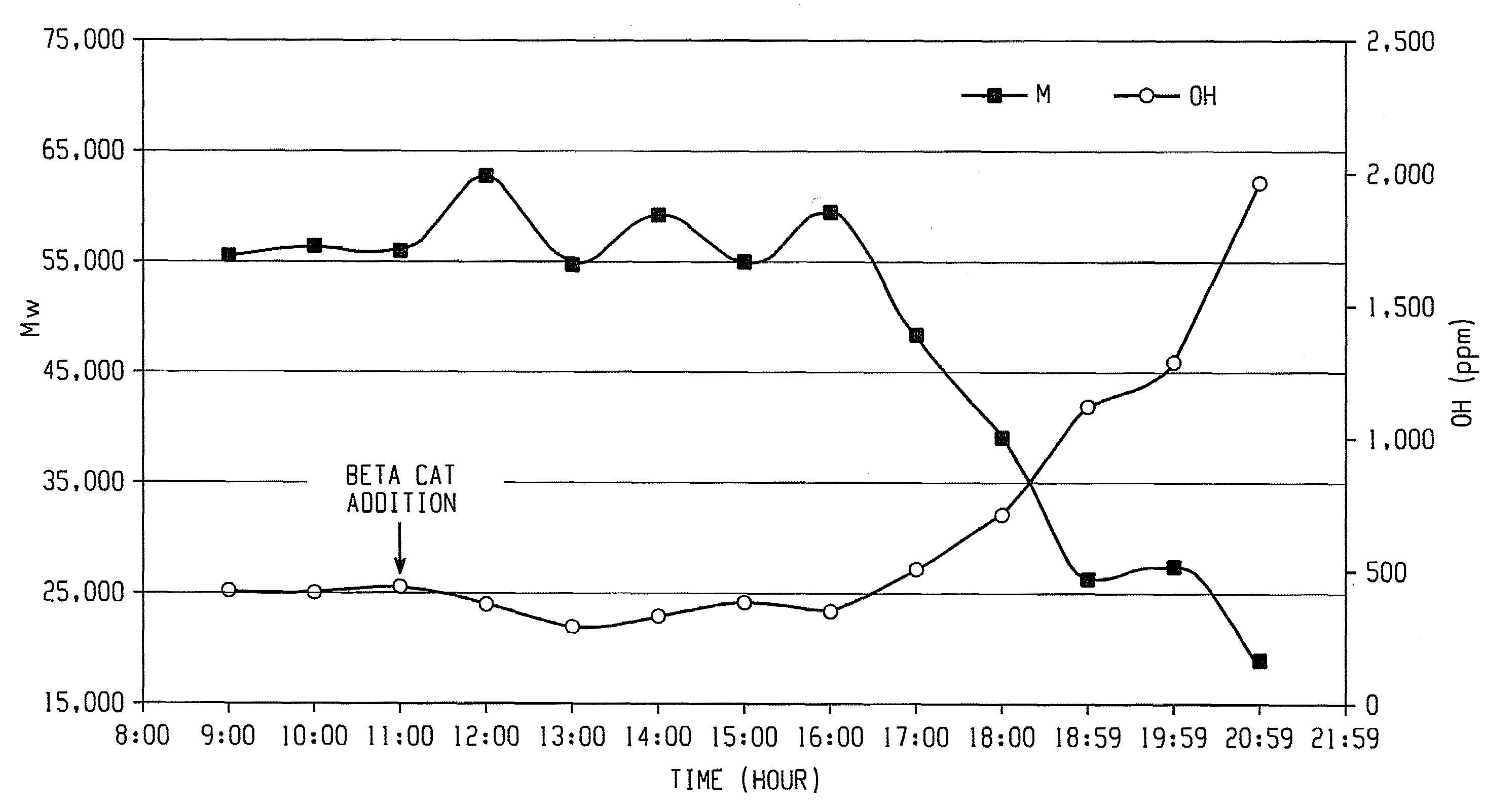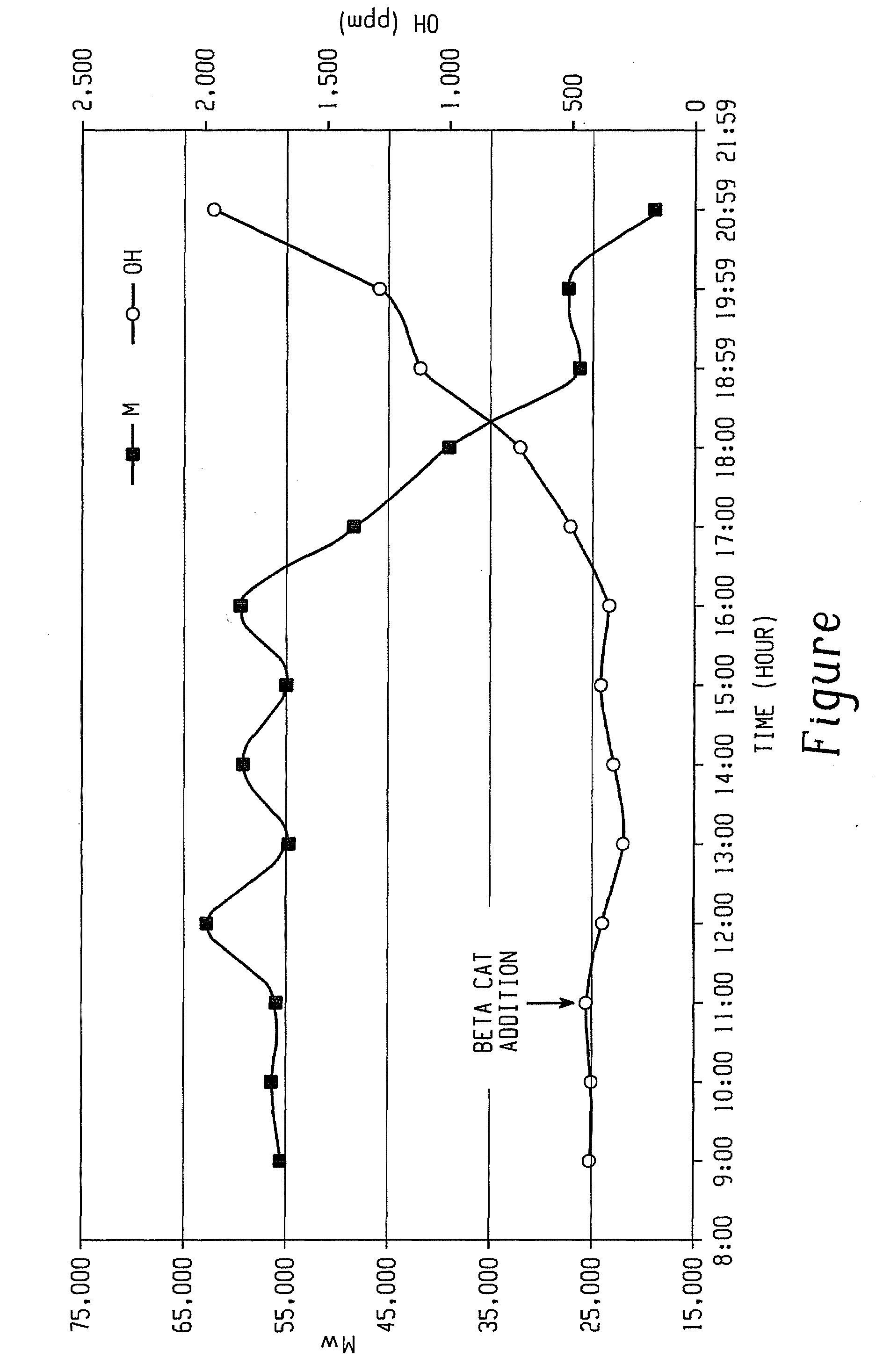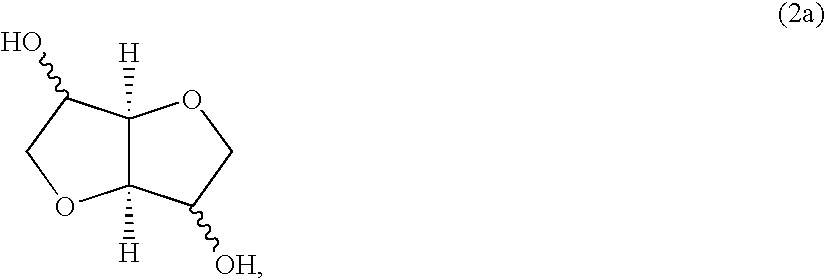Aliphatic diol-based polycarbonates, method of making, and articles formed therefrom
a technology of aliphatic diol and polycarbonate, which is applied in the direction of organic dyes, etc., can solve the problems of inconvenient melting polycondensation, inconvenient preparation of homopolycarbonates derived from isosorbide, and inability to produce polycarbonates commercially, etc., and achieves high-quality homopolycarbonates
Inactive Publication Date: 2009-04-23
SABIC INNOVATIVE PLASTICS IPBV
View PDF6 Cites 49 Cited by
- Summary
- Abstract
- Description
- Claims
- Application Information
AI Technical Summary
Benefits of technology
[0007]There accordingly remains a need in the art for high molecular weight isosorbide polycarbonate homopolymers and copolymers, and thus an efficient method to produce high quality homopolycarbonates from aliphatic diols, specifically isosorbide. T
Problems solved by technology
There have been several previous attempts to produce polycarbonates from isosorbide, but each of these attempts has had its difficulties, and therefore at present, such polycarbonates are not produced commercially.
However, this method is not suitable for preparing homopolycarbonate derived from isosorbide because the isosorbide solubility in water is too high, impeding the interphase transfer, and its acidity too low to proceed at an adequate rate in pH ranges suitable for interfacial phosgenation.
Thus, it was concluded that melt polycondensation is not suitable for the pre
Method used
the structure of the environmentally friendly knitted fabric provided by the present invention; figure 2 Flow chart of the yarn wrapping machine for environmentally friendly knitted fabrics and storage devices; image 3 Is the parameter map of the yarn covering machine
View moreImage
Smart Image Click on the blue labels to locate them in the text.
Smart ImageViewing Examples
Examples
Experimental program
Comparison scheme
Effect test
 Login to View More
Login to View More PUM
| Property | Measurement | Unit |
|---|---|---|
| Time | aaaaa | aaaaa |
| Substance count | aaaaa | aaaaa |
| Molar mass | aaaaa | aaaaa |
Login to View More
Abstract
The above-described and other deficiencies of the art are met by a method of making a polycarbonate polymer comprising isosorbide carbonate units, comprising melt reacting a dihydroxy compound comprising an isosorbide of the general formula (2a):
and an activated carbonate, in the presence of a catalyst consisting essentially of a sodium salt capable of providing a hydroxide ion, wherein the polycarbonate polymer comprises greater than or equal to 50 mol % isosorbide carbonate units, and wherein the polycarbonate polymer has a Mw of greater than or equal to about 40,000 g/mol as determined by gel-permeation chromatography relative to polystyrene standards. Polycarbonates comprising the isosorbide carbonate unit, including isosorbide homopolycarbonate and an isosorbide-based polyester-polycarbonate, are also disclosed, as are a thermoplastic composition and an article including the isosorbide-based polycarbonate polymer.
Description
BACKGROUND[0001]This disclosure relates to polycarbonates comprising aliphatic diols, and in particular to isosorbide-based polycarbonates, and methods of manufacture thereof.[0002]Polycarbonate homopolymers and copolymers of aliphatic diols, particularly isosorbides (i.e., 2,6-dioxabicyclo[3.3.0]octan-4,8-diol and isomers), are of great interest to the chemical industry because such aliphatic diols can be produced from renewable resources, namely sugars, rather than from petroleum feed stocks as for most presently used bisphenol monomers.[0003]However, the homo- or copolycarbonate incorporating isosorbide needs to be of sufficiently high molecular weight to have properties of practical importance. There have been several previous attempts to produce polycarbonates from isosorbide, but each of these attempts has had its difficulties, and therefore at present, such polycarbonates are not produced commercially. For instance, the primary method for preparing polycarbonates generally us...
Claims
the structure of the environmentally friendly knitted fabric provided by the present invention; figure 2 Flow chart of the yarn wrapping machine for environmentally friendly knitted fabrics and storage devices; image 3 Is the parameter map of the yarn covering machine
Login to View More Application Information
Patent Timeline
 Login to View More
Login to View More IPC IPC(8): C08G64/04
CPCC08G63/64C08G64/305C08G64/0208
Inventor CHATTERJEE, GAUTAMDHARA, DIBAKARJEGATHESAN, MUTHUVIJAYAN
Owner SABIC INNOVATIVE PLASTICS IPBV
Features
- R&D
- Intellectual Property
- Life Sciences
- Materials
- Tech Scout
Why Patsnap Eureka
- Unparalleled Data Quality
- Higher Quality Content
- 60% Fewer Hallucinations
Social media
Patsnap Eureka Blog
Learn More Browse by: Latest US Patents, China's latest patents, Technical Efficacy Thesaurus, Application Domain, Technology Topic, Popular Technical Reports.
© 2025 PatSnap. All rights reserved.Legal|Privacy policy|Modern Slavery Act Transparency Statement|Sitemap|About US| Contact US: help@patsnap.com



